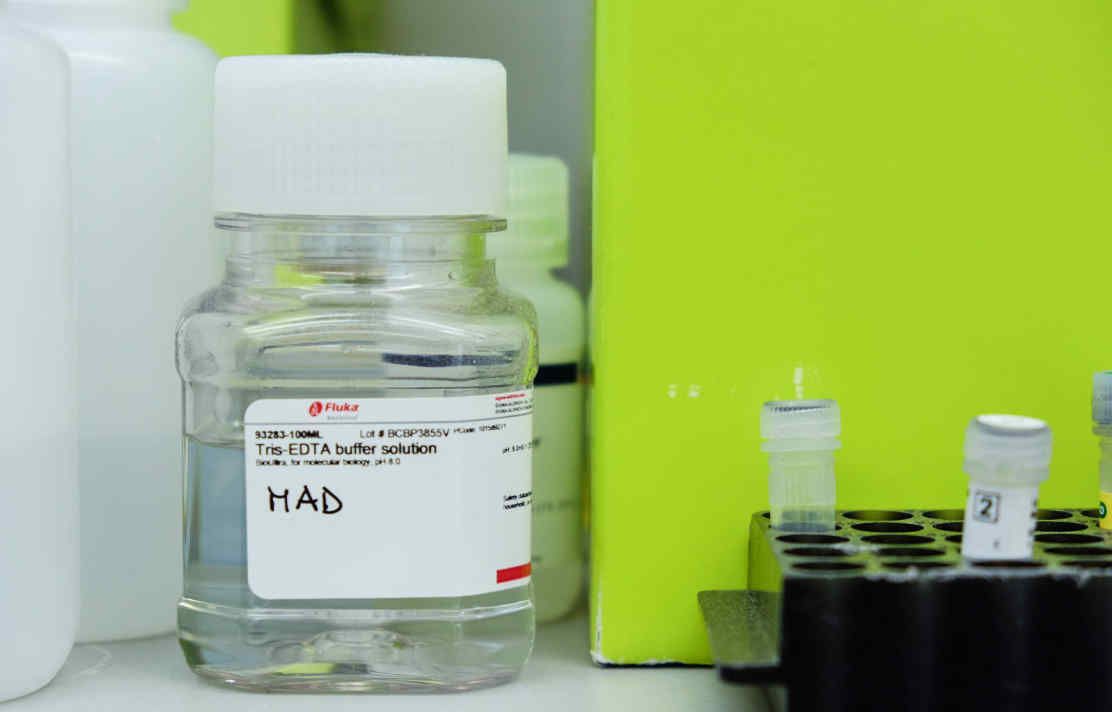Results
- Showing results for:
- Reset all filters
Search results
-
Journal articleHockenhull JC, murphy K, paterson S, 2016,
Mephedrone use is increasing in London
, Lancet, Vol: 387, Pages: 1719-1720, ISSN: 1474-547X -
Journal articleNahar LK, Cordero R, Nutt D, et al., 2016,
Validated method for the quantification of baclofen in human plasma using solid-phase extraction and liquid chromatography–tandem mass spectrometry
, Journal of Analytical Toxicology, Vol: 40, Pages: 117-123, ISSN: 0146-4760A highly sensitive and fully validated method was developed for the quantification of baclofen in human plasma. After adjusting the pH of the plasma samples using a phosphate buffer solution (pH 4), baclofen was purified using mixed mode (C8/cation exchange) solid-phase extraction (SPE) cartridges. Endogenous water-soluble compounds and lipids were removed from the cartridges before the samples were eluted and concentrated. The samples were analyzed using triple-quadrupoleliquid chromatography–tandem mass spectrometry (LC–MS-MS) with triggered dynamic multiple reaction monitoring mode for simultaneous quantification and confirmation. The assay was linear from 25 to 1,000 ng/mL (r2 > 0.999; n = 6). Intraday (n = 6) and interday (n = 15) imprecisions (% relative standard deviation) were <5%, and the average recovery was 30%. The limit of detection of the method was 5 ng/mL, and the limit of quantification was 25 ng/mL. Plasma samples from healthymale volunteers (n = 9, median age: 22) given two single oral doses of baclofen (10 and 60 mg) on nonconsecutive days were analyzed to demonstrate method applicability.
-
Journal articleAndrews R, Murphy KG, Nahar L, et al., 2015,
Cannabinoid concentrations detected in fatal road traffic collision victims compared with a population of other postmortem cases.
, Clin Chem, Vol: 61, Pages: 1256-1264BACKGROUND: Acute cannabis consumption nearly doubles the risk of motor vehicle collision resulting in injury or death. Limited data have been published regarding the concentrations of cannabinoids associated with fatal road traffic collisions (RTCs), and these have not previously been compared to a population of other postmortem cases. METHODS: We conducted analysis for cannabinoids [Δ(9)-tetrahydrocannabinol (THC), 11-hydroxy-THC, 11-nor-THC-9-carboxylic acid, cannabidiol, and cannabinol], drugs, and alcohol on consecutive fatal RTC cases (100) and non-RTC cases (114) from coroners' jurisdictions in London and southeast England and compared the data. RESULTS: The incidence of cannabinoids detected in non-RTC and RTC cases was similar (25% vs 21%, P = 0.44), but THC was detected more frequently (90% vs 59%, P = 0.01) and at significantly higher concentrations in the cannabinoid-positive RTC cases than the non-RTC cases (P = 0.01). The distribution of non-RTC and RTC cases over 4 categories of THC concentration was significantly different (P = 0.004). There was no significant difference in the concentrations of other cannabinoids detected between the 2 groups. Cannabinoids were detected in more fatal RTC cases (21) than alcohol >80 mg/dL (17). Detection of other drugs was low compared to cannabis and alcohol. CONCLUSIONS: These first data on the concentrations of cannabinoids in the postmortem blood of fatal RTC victims compared with a population of other routine coroners' cases highlight the importance of specifically measuring THC concentrations in the blood to aid interpretation of postmortem cases where cannabis may be implicated.
-
Journal articleHockenhull JC, Dhillo W, Andrews R, et al., 2012,
Investigation of markers to indicate and distinguish death due to alcoholic ketoacidosis, diabetic ketoacidosis and hyperosmolar hyperglycemic state using post-mortem samples
, Forensic Science International, ISSN: 0379-0738 -
Journal articleCordero R, Paterson S, 2007,
Simultaneous quantification of opiates, amphetamines, cocaine and metabolites and diazepam and metabolite in a single hair sample using GC-MS.
, J Chromatogr B Analyt Technol Biomed Life Sci, Vol: 850, Pages: 423-431, ISSN: 1570-0232A method is described for the simultaneous identification and quantification of opiates, amphetamines, cocainics, diazepam and nordiazepam from one hair extract (typically 10-50mg hair). After decontamination by washing with shampoo, dichloromethane, isopropanol and acetone, drugs were extracted using 0.1M HCl followed by SPE clean-up using mixed-mode extraction cartridges. The SPE extracts were submitted to a two-step derivatisation using MBTFA and MSTFA+1% TCMS and analysis was performed by GC-MS using both SIM and scan modes. Four deuterated standards were used to monitor 14 compounds. The limit of quantification was the total drug detected from the sample. This was 5 ng for amphetamines and 10 ng for remaining drugs which is equivalent to 0.1 and 0.2 ng/mg from a 50mg sample. Standard curves for the range 5-400 ng total drug concentration for all drugs had regression coefficients greater than 0.98. An authentic hair sample was used to validate the method and gave R.S.D.s <25% for both inter and intra-day reproducibility. The results of the analysis of hair taken from four patients attending a drug treatment clinic and six hair samples including head hair, pubic hair, axial hair and beard taken at post-mortem are presented.
This data is extracted from the Web of Science and reproduced under a licence from Thomson Reuters. You may not copy or re-distribute this data in whole or in part without the written consent of the Science business of Thomson Reuters.

Important links
General enquiries
Toxicology Unit
Imperial College London
Charing Cross Hospital Campus
St. Dunstan’s Road
London W6 8RP
+44 (0)20 3311 7108
s.paterson@imperial.ac.uk